Indoor yucca: rules of care and reproduction, possible problems when growing
Yucca is an evergreen plant that is often confused with a palm tree. To grow yucca at home, you do not need special knowledge or special requirements. An adult plant always causes delight and admiration among the guests of the house.
Content:
- What is yucca and where did it come from
- Variety of Yucca Species: Indoor Yucca
- Room yucca care
- Yucca breeding
- Diseases and possible problems when growing yucca
What is yucca and where did it come from
Yucca is a famous garden and indoor plant. Visually, it resembles a palm tree, has a large trunk and large strong leaves.
The evergreen plant came to our land from the southern regions of North America. In America, yucca is used not only as an ornamental plant, but also for making fibers for clothes, bags, ropes, baskets, yucca roots are used to extract a red dye, sometimes used in folk medicine. Yucca is hard to endure the winter, so it requires shelter.
Today there are about 40 types of yucca, many of them grow in the southwestern United States or Mexico.
These areas are characterized by an arid climate, but this does not mean that yucca does not like moisture. For example, some species grow on the islands of the Caribbean Sea, where the air moisture level is quite high.
In the CIS countries, you can find no more than 10 types of yucca. In regions with milder climates, the plant is grown outdoors, in more severe ones - at home.
Yucca contains a large amount of starch, so it can be added to food. The main thing is not to confuse it with another plant with a similar name from the Euphorbia family.
Yucca Description:
- The plant, depending on the species, can be in the form shrub or large tree.
- The leaves of the "palm" are dense, hard, saturated green, most often monochromatic, but sometimes have light streaks.
- As for the shape of the yucca leaves, they are collected in a rosette, themselves straight and long, that is, linear-lanceolate, with a pointed end.
- The length of a single leaf, depending on the type and growing conditions, ranges from 0.5 to 1 meter.
- Yucca becomes even more beautiful when it begins to bloom. Once a year, she releases small white flowers that resemble bells in shape.
- The flowers are collected in one large panicle, which originates in the middle of the leaf rosette.
- Fruits on yucca are either berries or seed boxes.
Yucca blooms and fruiting occurs only in natural conditions, where pollination can occur. Usually a special butterfly does this.
Variety of Yucca Species: Indoor Yucca
As for yucca, which grows in natural conditions, the most common yucca Shidigera:
- It is a short tree with long, erect leaves.
- It grows in the south of the United States.
- The fruits are juicy, eaten, used in folk medicine.
In the same area, another type of Joshua yucca grows:
- The palm tree grows up to 8 meters, curved shoots, short leaves.
- Because of this, this species is sometimes called short-leaved.
In Crimea and the Caucasus growing filamentous yucca:
- In these regions, it does not require shelter for the winter, but with shelter it can withstand the climatic conditions of central Russia.
- Filamentous yucca is a shrub with characteristic white or yellow stripes on the leaves.
- The flowers emit a pleasant aroma, the peduncle is very large, it rises a meter from the rosette of leaves.
- This species can also be grown at home.
Also, in the presence of warm conditions, you can grow glorious yucca and gray:
- They are similar in appearance, have creamy white flowers and similar care and growing requirements.
Under indoor conditions, two types of yucca are grown: elephant and aloe:
- The elephant yucca is called a false palm. It is a low shrub, the leaves are long, the edge is sharp. The name comes from the trunk, which, as it grows, becomes strong and thick, like an elephant's leg. The plant came to us from arid regions where there are few pests, so growing it yourself does not cause problems.
- Aloe-leaf yucca is also grown at home, its leaves are leathery, tough. It is more difficult to care for it, as it grows up, this yucca grows into a spherical bush. The trunk is identical with the previous species, but the aloe-leaf representative is slightly lower.
Indoor yucca has one of several rosettes of leaves. The length of each is from 30 to 80 cm, the width is within 6 cm. At home usually grows no more than 2 meters. The upper part of the plant develops too quickly, so the root system does not always have time to provide the plant with moisture and nutrients to the fullest.
The yucca houseplant loves fresh air, so in the summer it can be taken out onto the balcony or outside, but not into the open sun.
The cost of a plant ranges from $ 10 to $ 400. per copy, the plant is very valuable, so you can safely give it to dear people.
Room yucca care
Indoor yucca is an unpretentious plant, caring for the plant will not take much time. The plant is evergreen, although it has external similarities with palm trees, dracaena and cordinilla, it is still completely different plants.
Since we are most often talking about elephant yucca or aloe leaf, it came to us from arid regions, where there is a small amount of rainfall, but a large amount of sunlight. Therefore, yucca will develop in similar conditions at home, that is, with low watering and hot air.
Yucca will respond well if you place it near the southern windows, but if direct sunlight falls on it, then it is better to move the pot away from this place.
If there is not enough light, then the leaves of the "palm" will begin to stretch towards the sun and gradually deplete.
Watering the plant:
- The main condition for the successful growth of yucca is proper watering.
- It is important that the soil has time to dry out and does not remain damp; the soil must not be poured.
- If the tree stays without watering for a long time, it will be able to tolerate it normally, but if the plant is poured, then this is fraught with problems.
- There is no single system for watered yucca. Much depends on the season, the microclimate of the region, the weather at the moment, the humidity of the ambient air, and the size of the plant and pot.
- In summer, yucca requires abundant watering, each subsequent watering is carried out when the top layer of the earth dries out by 7 cm. If the temperature in the room is kept at a level of 17 to 20 degrees, then one watering per week is enough. In a pot with a volume of 5 liters, 1 liter of water is enough.
- In spring, autumn and winter, the amount and volume of watering is reduced. Otherwise, you can get rotting of the root system. You can understand this by the brown spots on the leaves and their folding.
- A large plant with a lot of leaves will quickly evaporate moisture, this should also be taken into account when watering. It is not necessary to spray the plant, even if the air is very dry.It is strictly forbidden to spray the leaves if exposed sunlight falls on them, otherwise you can get burns.
- If in summer the plant does not need additional moisture, then in winter it is better to spray them periodically, especially if the room temperature is high.
Yucca responds well to fertilizers, top dressing is applied two to three times a month during the period of active growth. Yucca is not fertilized until it has had time to adapt to new conditions or after transplantation, as well as during illness.
Plant the yucca in light soil with good drainage.
To prepare the mixture yourself, you will need deciduous soil, sod land, peat, sand and humus, all in equal proportions. The main conditions for the active growth of yucca are proper watering and plenty of sunlight.
Yucca breeding
If the plant has grown too tall, then the upper part can be safely cut off and divided into cuttings. On the part that remains, new leaves will soon appear from the side buds.
Reproduction is carried out by three methods:
- Cuttings.
- Part of the trunk.
- Seeds.
Flower cuttings:
- Length of each handle for further reproduction should be at least 20 cm.
- So that the cut on the plant is quickly tightened, it is smeared with garden varnish or sprinkled with activated carbon.
- Rooting of the cuttings can be expected no earlier than 1.5 months. For the process to take place successfully, you need to maintain an air temperature of 20 degrees and humidity within 80%.
- Before placing the cutting in the ground, its cut is dried, for this it is enough to wait 20 minutes.
- At this time, a greenhouse is prepared and a mixture of sand and sod land is made. The stalk can also be dipped in a glass of boiled water. A tablet of activated carbon is placed in the water, which will kill harmful microorganisms.
- To prepare the soil, it is pre-sprayed to create the moisture necessary for the cuttings.
- As soon as the first roots appear, the stalk is transplanted into the substrate... If you delay, rotting of the cutting is possible.
Yucca can be propagated with part of the trunk, if there are dormant buds on it.
A part of the trunk is cut off and placed horizontally in the substrate. Wet sand is used as a soil. The barrel is pressed tightly to the ground and covered with glass or film.
Sleeping buds will soon wake up, new shoots will be formed from them. After that, the trunk can be taken out of the sand and cut into the number of shoots. The sections are treated with activated carbon and dried for 20 minutes. Now each shoot is placed in separate pots.
Rarely do gardeners use seed plant propagation, especially when it comes to indoor plants.
Yucca gives good germination of seeds, so if you have seeds, you can take a chance. To begin with, a greenhouse is made, the container is filled with turf soil with mixed sand. Seeds are laid out on the surface and covered with foil or glass. Every day you need to remove the film for airing. From time to time, the ground is sprayed to maintain moisture. The first shoots will appear in a month.
Diseases and possible problems when growing yucca
Since indoor yucca rarely encounters diseases and other parasites, the owner of the flower does not have to worry. But often the plant begins to shed its leaves or rot.
What is it connected with:
- If the tips of the yucca leaves turn brown, and the rest of the plant behaves as before, then most likely the plant does not receive enough moisture (either through watering or through the air). The problem is solved simply: you need to increase the amount or volume of irrigation, or increase the humidity of the air, start applying spraying.
- If brown spots appear on the leavesthat are dry and fragile to the touch, then we are talking about a small frequency of watering. This means that the plant needs to be watered more often so that the earthen ball is constantly moist.But do not forget that the top layer of the earth, 5-7 cm, should have time to dry out.
- If the spots on the leaves are, on the contrary, light in color, then this is due to a large amount of sunlight. In this case, you need to transfer the plant to partial shade or make a sun block.
- If the leaves became not as elastic as before, and the ends began to curl, then this may be due to the low air temperature in the room. You need to find a warmer place in the room: change the side to the south, move the pot closer to the radiator and further away from cold glasses.
- If only the lower leaves are affected, and the upper ones continue to develop normally, then there is no need to worry at all. This process is constantly accompanied by yucca.
The shape of the tree is precisely formed due to the falling of the lower leaves.
Yucca also has pests, this can be determined by the following signs: the leaves have acquired a gray tint, the appearance of specks on the leaves, which eventually combine, a cobweb appeared under the leaves, the leaves became weak, thin, turned pale.
The most common pests of indoor yucca are:
- Gray rot.
- Spider mite.
- Mealybug.
- Aphid.
These parasites are not life-threatening for the plant, it is enough to treat the yucca with special fungicides, remove spoiled leaves and remove cobwebs or other parasites.
Yucca is an expensive, self-sufficient plant that can be used to decorate a room or hallway alone, without supplementing with other plants.
More information can be found in the video.



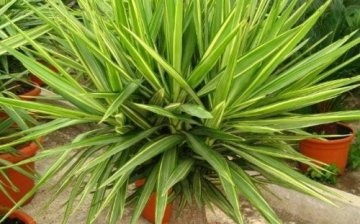

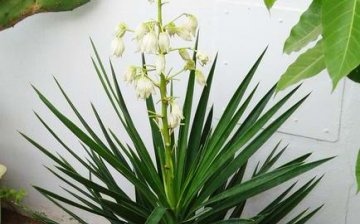

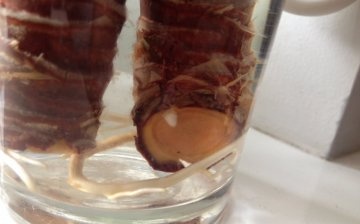
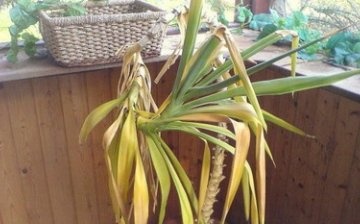






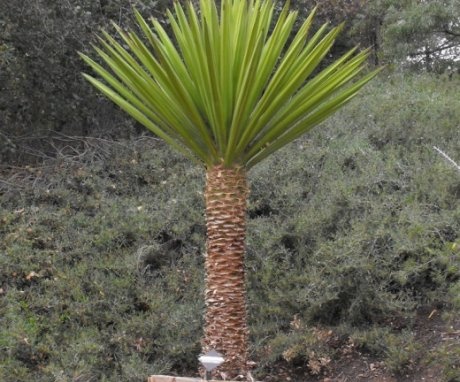
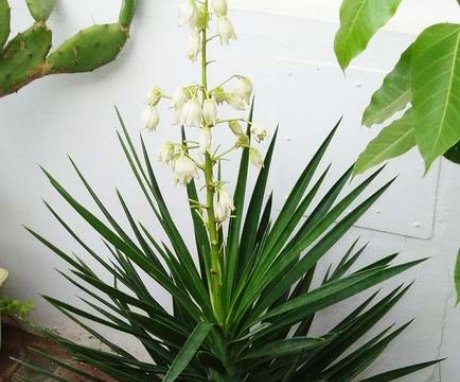
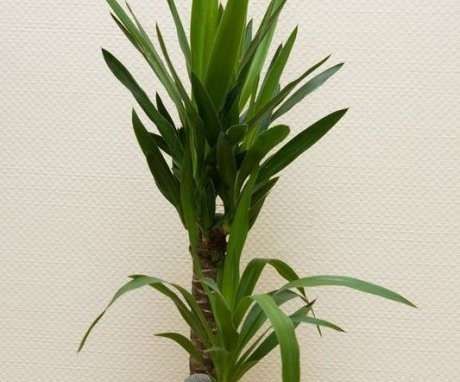
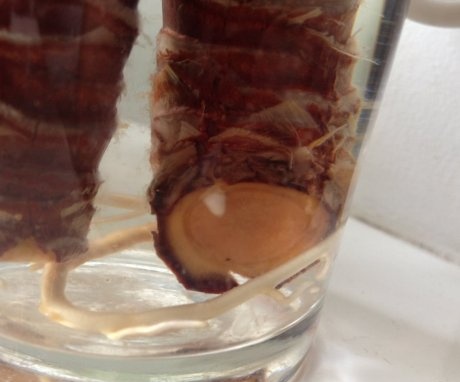
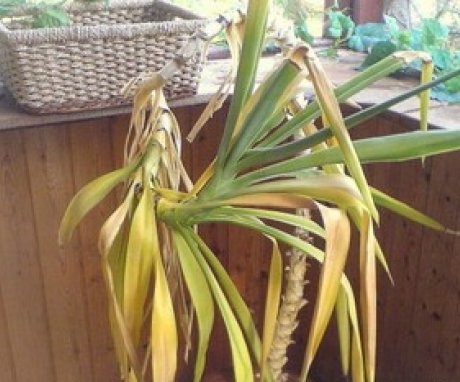
Hello everybody! I came here to read about my new palm tree, which they gave me ... I read somewhere that in winter you need to clean the yucca in the dark and keep it at a temperature of no more than 10 degrees, can someone tell me if this is also necessary? How to provide such conditions?
... I read somewhere that in winter you need to clean the yucca in the dark and keep it at a temperature of no more than 10 degrees, can someone tell me if this is also necessary? How to provide such conditions?
A spider mite starts up if the plant is not sometimes sprayed with water and not cleaned of dust, but it is much more difficult to cope with other pests and prevent their appearance too.